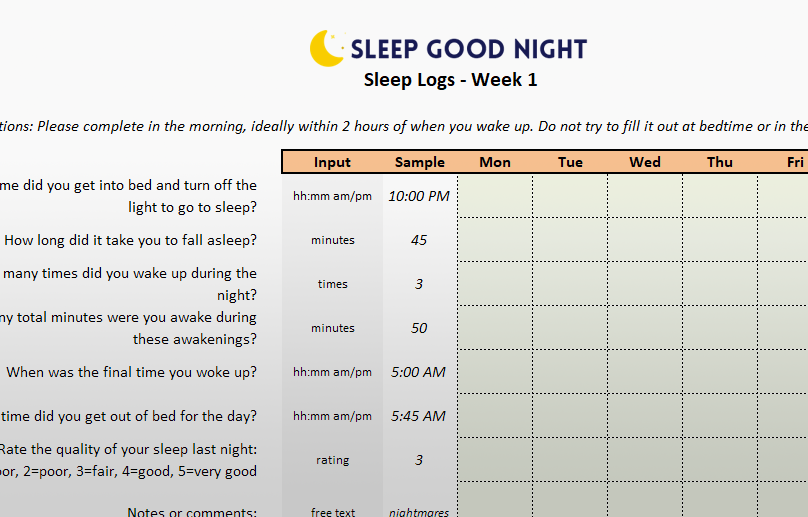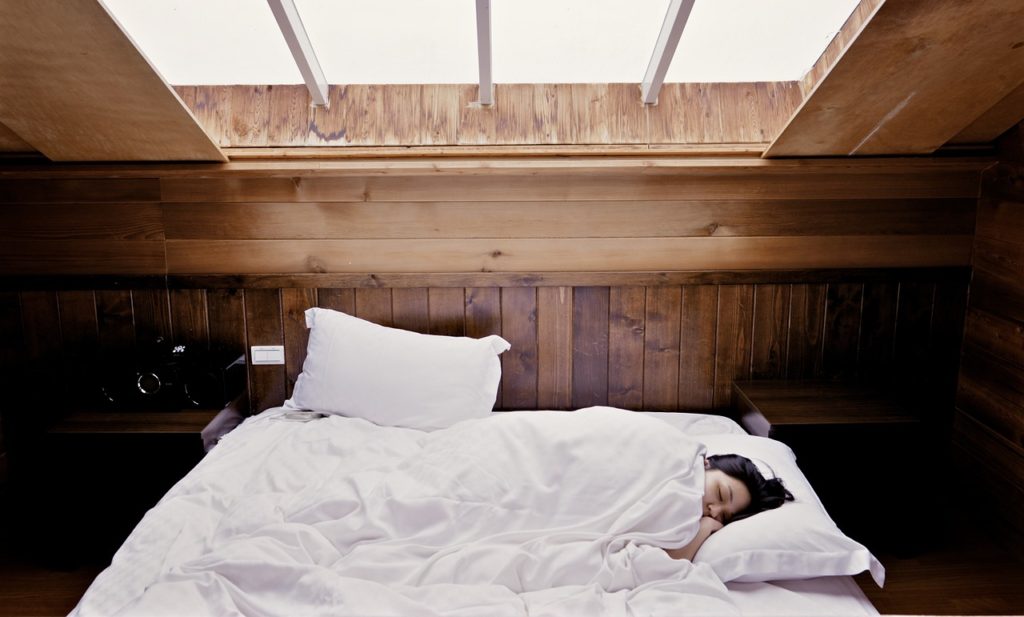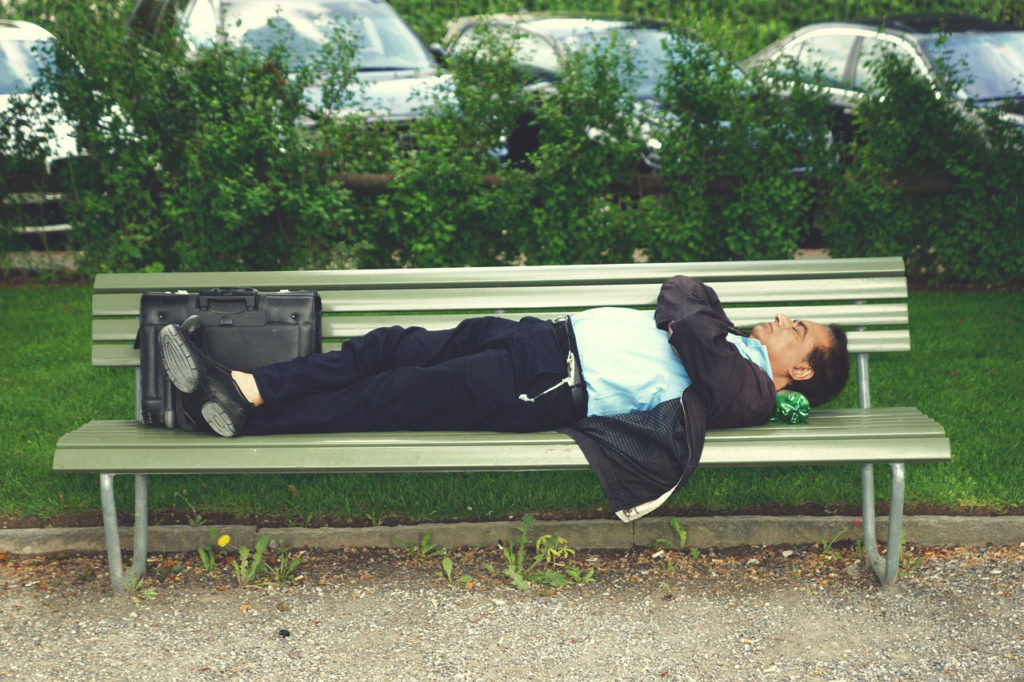Sleep logs are usually an essential part of behavioral insomnia treatment for two main reasons: 1) baseline sleep data (pre-treatment) guides the initial sleep schedule modifications by providing important calculations such as sleep efficiency, average total sleep, sleep latency, and time in bed, and 2) ongoing sleep data shows trends during treatment and can tell us what is working or not working.
There is a third benefit that isn’t as immediately obvious, and that is that keeping daily track of your sleep/wake schedule brings awareness to your sleep patterns – shedding light onto patterns that may have been perpetuating over years or nuance into details you may have the tendency to filter through cognitive bias. This doesn’t always happen, but I have had clients whose insomnia started to get better simply by keeping sleep logs, before we even got to the behavioral intervention! For those folks, the awareness piece was all it took to identify and start un-sticking some of the maladaptive sleep patterns that they had been stuck in. They didn’t need the rest of the CBT-I therapy!
Am I promising that this will happen to you? Unfortunately not. The sleep logs are a tool, not some magic potion. It isn’t necessarily the one key that will unlock all of the sleep mysteries. However, it can be a powerful tool, and help you calculate baseline sleep data, illuminate trends as you progress, and offer awareness of sleep patterns. I want to share this tool with you as a resource and offer a few helpful pointers based on my experience.
Click here to download the Sleep Logs
Dear diary, you won’t believe how I slept last night…
Actually, my sleep log isn’t the only version out there, so feel free to check out what else is out there on the interwebs. I’ve honed mine over the years to be simple to use and contain only the most essential elements so that it isn’t so much of a chore. In behavioral sleep medicine they’re more frequently referred to as “sleep diaries”, but I prefer to call them sleep logs because it feels silly to ask my clinic patients if they’ve brought their diaries and if I could read them. (Also, in the clinical setting there are other logs, such as headache logs and anxiety logs, so I like the consistency as well.) If you’d prefer to fill in a lot more detail, such as caffeine intake, medication details, nap specifics, etc., please feel free to use the more thorough sleep logs out there.
Within 2 hours of waking up
The biggest challenge that clients face when starting to keep sleep logs is consistently doing it every day, finding a way to make the habit stick. Behavioral research suggests that the most effective way to make a new habit stick is to hook it into a routine or behavior you’re already engaging in. So make it part of your morning prep routine, or the first thing you do when you reach for your glasses, or leave it on your desk at work. Maybe even set a daily reminder alarm.
You’ll want to aim to complete the daily sleep log within 2 hours of waking up. Why? Because that’s when the details of the previous night are the most fresh, basically that’s how you’ll get the most accurate data. If you wait ’til the afternoon, you’re increasing the chances that you’ll just draw a complete blank when you try to remember the details of the previous night. And if you forgot to do it for a few days, just skip those days and keep going, don’t try to backtrack multiple days at a time.1
Don’t overthink it, don’t overmonitor
Please note: don’t let the act of monitoring your sleep actually exacerbate the insomnia symptoms. There is a risk that your efforts to keep track of your sleep/wake patterns will actually cause the problem to worsen, particularly if there is a lot of anxiety intertwined with the sleep problems. Here are a few tips that should help to keep this risk low.
- Don’t “clock watch” at night. It’s fine to make a mental note of when you’re heading into bed, but try not to keep glancing over at your alarm clock when you’re trying to fall asleep, or in the middle of the night when you wake up.
- Complete your sleep log in the mornings. You don’t need to record the time right as you are getting into bed, or keep the sleep log on your nightstand so you can put a tick mark each time you wake up, etc. Just fill it out in the mornings after you wake up.
- Your best guess is good enough. Don’t stress or overthink it when you’re filling out the sleep logs. Some days you might draw a blank when trying to recall specifics, but that’s okay, use your best guess. Logging the data within 2 hours of waking up should help with accuracy, and you’ll get used to estimating. Plus, since it will be the same person recording the data, we can be confident in trends we see over time.
Sleep monitoring gadgets
Finally, I often get asked by clients if the sleep data from their Fitbit or smartwatch or other sleep monitoring device is sufficient to substitute for the sleep logs. This is a great question, but one that requires much more time and nuance than I have the space for here. The short answer, however, is: not quite, at least not yet.
The slightly longer answer: Consumer health/wearable technology has advanced at blazing speeds in the past decade and a half, and it is for sure a promising field with all sorts of implications for our health and fitness habits. I’m no sleep-tech Luddite – in fact, I’ve tested/owned dozens of sleep monitoring gadgets and apps over the years2 – but the state of the sleep tracking technology is simply that those devices aren’t accurate enough yet to use in a clinical setting to treat insomnia. The fundamental problem for all of these devices is that they can’t actually measure sleep/wakefulness directly (which would require EEG electrodes on the head) but have to basically make an educated guess based on whatever inputs they’re measuring, like wrist movement, heart rate, sound level, etc. While these algorithms are fairly sophisticated and pretty impressive, they’re 1) proprietary to each manufacturer and vary widely in accuracy, and 2) almost always normalized to the general population, not the subset experiencing sleep problems.
Therefore, these sleep monitoring devices generally cannot be relied upon exclusively in the context of treating insomnia. For treating insomnia, self-report sleep logs are still considered by the field of sleep medicine to be the gold standard in sleep data gathering. That said, I believe sleep monitoring gadgets and apps can definitely be useful, so I am not against using them. In fact, I’m really looking forward to the day when the sleep tech becomes so accurate that it makes the manual sleep logs obsolete. Until then, take the reports, the data, the “stages of sleep” stuff, with a grain of salt, and if you’re calculating numbers for your sleep schedule, consider the data as complementary to your self-report sleep log data.
Without further ado, here it is:
SleepLog.xlsx Click here to download
In part two (not yet available), I will give a brief explanation of how to use the sleep log calculations to make adjustments to your sleep schedule.
- I think it’s pretty funny when it happens, but when I facilitate CBT-I groups at my clinic, I sometimes see my patients sitting in the waiting area before group, frantically trying to fill out a whole week’s worth of sleep logs. Hmm… suspiciously similar sleep data every day, plus same frantic handwriting in the same ink… haha! As a homework procrastinator myself, no judgment from me, but it just isn’t as helpful as accurate daily data.
- Various ones that: go around your wrist, sit on your nightstand, go underneath the mattress, wrap around your forehead (!!)


